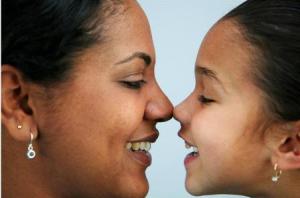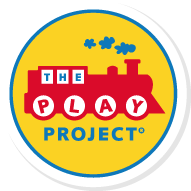
In the P.L.A.Y. Project, one of the most frequent suggestions Home Consultants (HC’s) give parents is to “get more circles.” The term circle refers to a circle of communication (COC), which simply put is the back and forth process of communication. This definition can be misleading to parents and professionals alike because it implies that a verbal exchange must take place for it to count as a circle. Truth be told, circles can be any form of communication; verbal, gestural, or tactile (i.e. sounds/words, back and forth smiles, social referencing, touch, etc.). A child’s ability to open and close numerous circles is not contingent upon his expressive language skills. In fact, children with verbal apraxia (an oral motor speech disorder), have the potential to open and close just as many circles as their expressively fluent peers.
So why does this matter anyway? A key indicator of Functional Developmental Level (FDL) 4 is a child’s ability to: “work up to a continuous flow of 20 to 30+ back and forth circles of communication.” For a child with autism, this is no simple task. The reason this ‘flow of circles‘ is so important is because it demonstrates the child’s ability (and desire) to stay in a relationship with another person while responding to that person’s cues (i.e. language, touch, facial expressions, etc.). This difficult part about this process is that it is not a skill that can be easily taught or even practiced, which is why it is often a long-term goal for young children with autism. A child’s ability to open and close 20-30+ circles comes when the child not only demonstrates good capacities in the first 3 FDL’s, but also when the child is intrinsically motivated to participate in a relationship with another person. In The P.L.A.Y. Project, we advocate for using meaningful and fun ways of interacting with children with autism in order to give them a positive experience and to reinforce the idea that being in a relationship can be enjoyable. Once children master level 4, they have arguably overcome one of the most significant obstacles of autism which is the impairment in social interaction.
Unfortunately, FDL 4 is often overlooked or skipped because of the emphasis on academic skills and other skills that are typically observed in FDL’s 5 and 6 (e.g. answering wh-questions, labeling objects, completing complex tasks, recreating pretend scenarios, etc.). The danger in challenging a child in the higher levels before he has mastered the first 4 FDL’s is that the child will lack some of the most basic social and emotional skills including: the ability to self-regulate and sustain attention, engage with another person, demonstrate intention, and sustain a relationship with an adult or peer. Therefore, challenging a child at too high a level may result in inconsistent and/or poor performance.
What can you do? The next time you are interacting with a young child with autism, think about ‘the flow of circles’. Think about how many circles you are generating in a row and how much effort you are putting in as compared to the child. If the interactions feel forced or one-sided, your demands on the child may be too great. When this happens, try to relax, follow the child’s lead, and remember what Dr. Solomon always says: “by doing what your child loves, your child will love being with you.”
